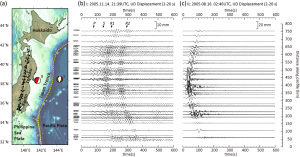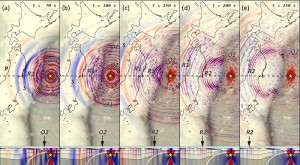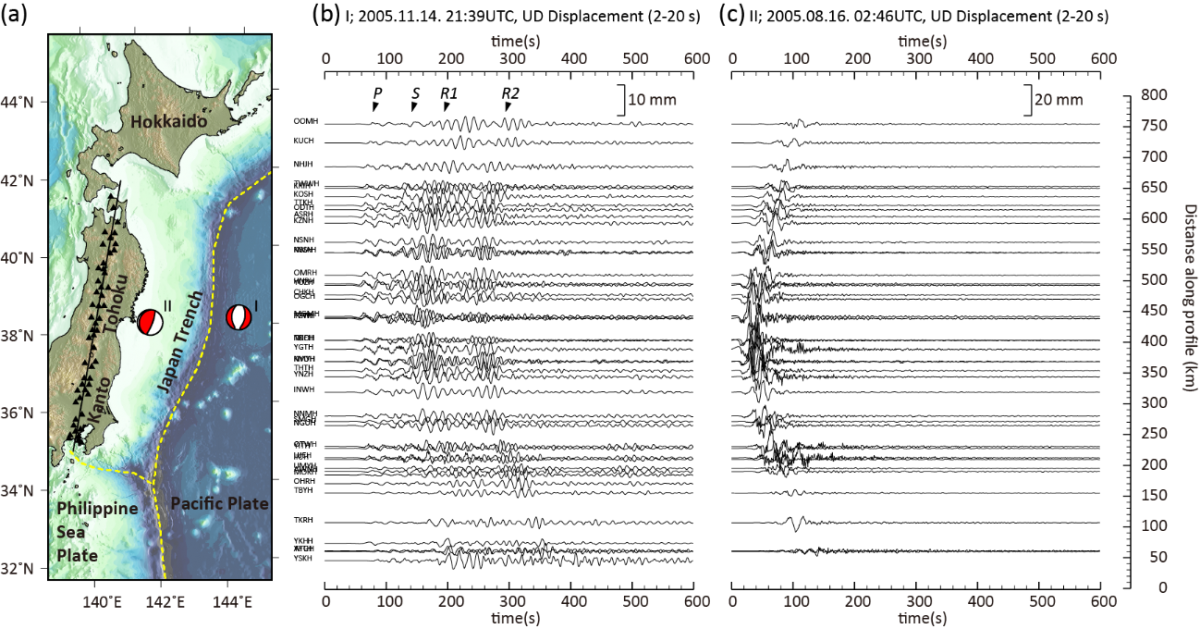Shinako Noguchi,1 Takuto Maeda2 and Takashi Furumura2
1Association for the Development of Earthquake Prediction (ADEP)
2Earthquake Research Institute, The University of Tokyo
Geophys. J. Int., 205(2), 1099-1107, doi:10.1093/gji/ggw074, 2016
SUMMARY
We investigate the cause of anomalously long duration (>100 s), long-period (T = 13–14 s) phase packets following the Rayleigh wave, which are observed widely in eastern Japan during outer-rise earthquakes. As this phase is not seen in records of interplate earthquakes, the late long-period phase is assumed to develop as a result of propagation across the Japan Trench.
Using 3-D finite-difference simulations of seismic wave propagation with a detailed structural model that includes seafloor topography and water layers, we demonstrate that the late phase could be generated by a fundamental-mode oceanic Rayleigh wave propagating in the deep
Pacific (at a depth of 6 km), which converts to a fundamental-mode continental Rayleigh wave as it crosses the Japan Trench. Our models suggest that the conversion is caused by the change in bathymetry. Based on analysis of surface wave dispersion, we confirm that the first arrival of the Rayleigh wave on land can develop from the first higher mode oceanic Rayleigh wave.
The successive arrivals of the two types of Rayleigh waves on land produce ground motions with very long durations after outer-rise earthquakes.


(Click the figure to see animation)


